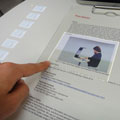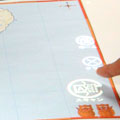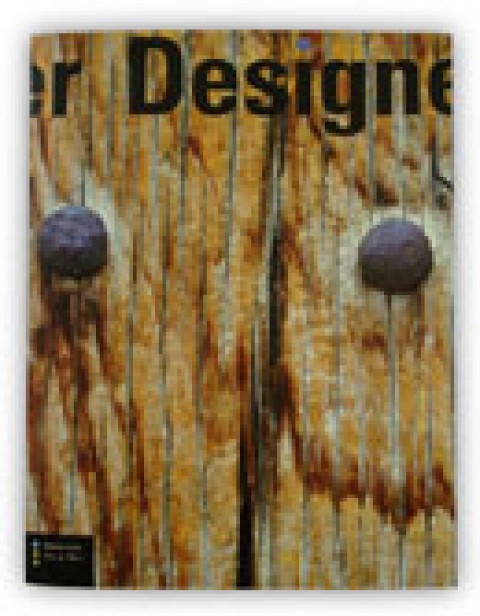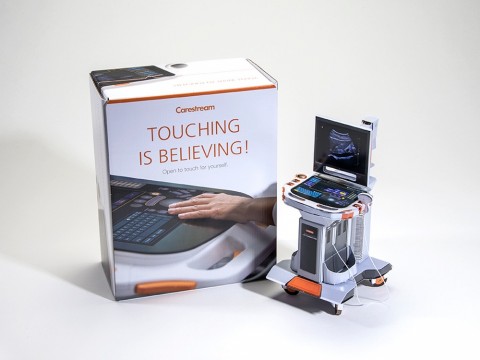
It is not based on QR codes, nor does it require you to photograph a paper-based picture using your smartphone or iPad – approaches we’ve seen in abundance over the last few months.
What this technology does is track your finger as it glides over any open book or piece of paper using a simple webcam and a commercial projector. Slide your fingertip across a sentence on the printed page and the technology behaves as if you’ve clicked a hyperlink. The projector projects whatever extra material is available onto your physical desktop: images, extra text, videos – anything’s possible.
[youtube=https://www.youtube.com/watch?v=I2l0qklSzks]

In this case, the system has mapped out the page itself and is only following your finger movement in relation to its place on the paper. Not only does this mean the curvature of book and magazine pages will not affect it, but also paper techniques from embossing and engraving to diecutting should also work without a problem.












